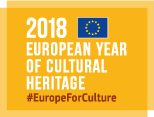NANOMATCH consolidants
Challenge: WHY the innovation has been developed? What problem is addressed and why has not been not solved before?
Anthropogenic activity and climate changes have worsened the natural decay of historic building materials. To cope the problem of deterioration, many treatments have been proposed. Traditional treatments have been drastically reconsidered: organic products undergo chemical modifications with loss of efficiency and treatment irreversibility, inorganic ones suffer from scarce compatibility or low concentration and penetration. Nanostructured materials have also been developed for stone conservation; for calcareous stone the most known are nanolimes, which have also shown some limitations, therefore they have been mainly used for the recovery of superficial de-cohesion (e.g. mural paintings).
Solution: WHAT the solution is about? HOW it goes beyond the state of the art?
The NANOMATCH project has developed consolidants for stone and stone-like materials with features able to improve resistance and durability of historic materials. NANOMATCH products are based on alkaline earth alkoxides with a great potential for the development of nanostructured materials, thanks to their high versatility of metal functionalization. They are suitable molecular precursors of consolidants for carbonate stone and stone-like materials achieving a better consolidation and resistance towards environmental/climatic attack. Calcium alkoxides have demonstrated to overcome the problems faced by the use of organic polymers and the limitations of inorganic treatments. In fact, NANOMATCH products are produced as nanosuspensions with particle size smaller than 100nm, higher calcium nanoparticles content in suspension with respect to nanolimes, and have proven to be efficient consolidants, with no risk to release hazardous nanoparticles.
End-users and examples of uses: WHO will beneficiate/ is beneficiating from the solution? WHERE and HOW the solution has been adopted? How will impact people or end-users? Add as more as possible examples of market and society uptakes
The availability of these highly concentrated and performing consolidants could capture a large market since such inorganic compatible products are lacking in historic and heritage buildings and objects. Moreover, maintenance, conservation and refurbishment are expected to be reduced by the competitive pricing of these products, combined to their durability. Not only specific end users like restorers and public authorities or privates in charge of the monuments/historical buildings could benefit from a good restoration product, but also the citizenship. In fact, restoration of cultural objects is important because they are recognized as contributing to the sense of identity of communities. Other benefits for the citizens will be due to reduced restoration/maintenance costs (often on the public expenses budget). Finally, also the environment will be respected being products totally compatible with the natural substrate as already demonstrated during NANOMATCH project. The creation of a market also behind the niche of cultural heritage (see below) could induce another socioeconomic benefit with the possible industrialization (production and commercialization) of these new products and the creation of new skills and jobs. Currently they have been applied in some selected objects in 4 real cases during the NANOMATCH project (in Florence, Cologne, Bucharest, Oviedo) and in other lab experimentations during and after the NANOMATCH project.
Future possibilities: Future market perspectives when the innovation will be fully available or in use
Currently the products need to be optimized before their final introduction into the market, solving the problems related to their stability over time and their purity. When the products will be ready for the market other possible applications also behind the niche of cultural heritage can be foreseen and were identified. A possible application could be the treatment of microcrackings in concrete, for which a good solution has not been found yet. Outside the market of cultural heritage other possible application in civil building market are in fact foreseen, especially in the restoration of precious artefact (e.g for fixing small fractures in marble containing mortars, called “marmorino” or for the restoration of marble family graves). Once the innovation will be fully available and their use and knowledge will be spread out, end user will get intimacy with the products and they will surely propose new possible applications
References for more information (eg. website, social media)
Contacts:
Patrizia Tomasin (patrizia.tomasin@cnr.it)
Adriana Bernardi (a.bernardi@isac.cnr.it)
Application sectors:
- Historical sites
- Restoration and conservation of CH
Objectives:
- Market/business development
RRI Dimensions:
- Public Engagement
Communities:
- Advanced future technologies for heritage and arts

